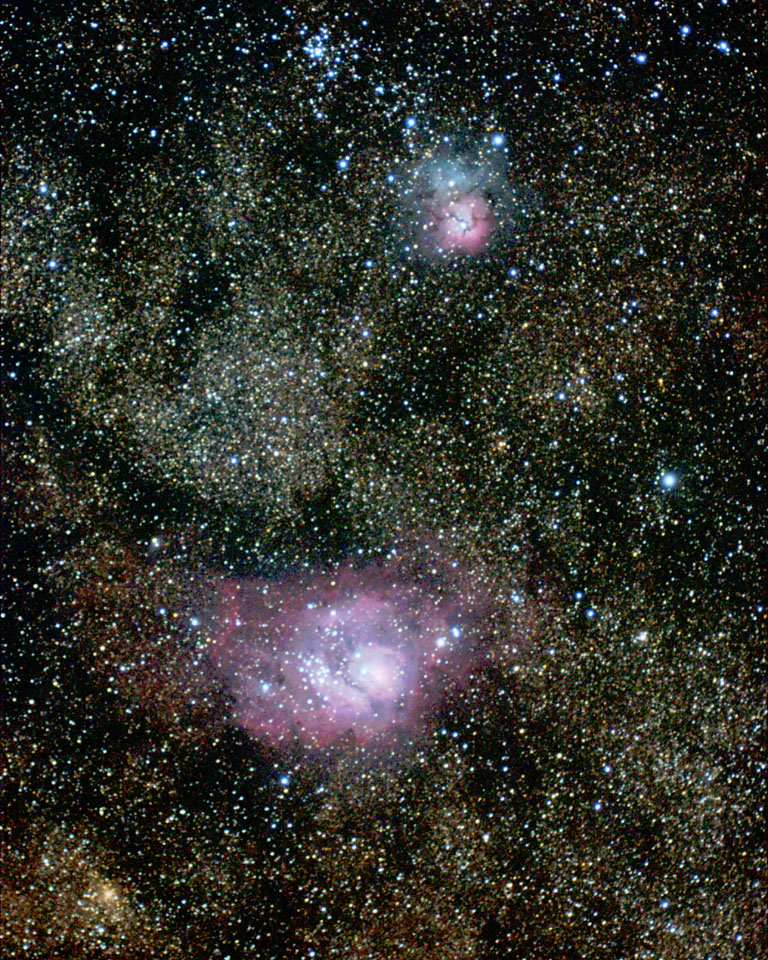| NOTES |
DATE:
|
Saturday, September 3, 2005
|
TIME:
|
8:46 pm - 9:31 pm EDT
|
CAMERA:
|
Canon
EOS 300D Digital Rebel |
EXPOSURE:
|
5 × 2 minutes @ ISO 400, 5 × 2 minutes @ ISO 800, 1 × 4 minutes @ ISO 1600 |
LOCATION:
|
Black Forest Star Party (Cherry Springs State Park,
Potter County, Pennsylvania) |
INSTRUMENT:
|
Tele Vue Pronto 70 mm refractor (with Focal Reducer/Field
Flattener) piggybacked on 10" LX200. |
PROCESSING:
|
Dark frame subtracted, aligned, stacked,
enhanced and cropped with
Adobe Photoshop 7.0 |
COMMENTS:
|
The
Lagoon (M8) and Trifid Nebula (M20) region
is easily my favorite section of the sky to observe; be it with a
telescope,
binoculars, or the naked eye. The Lagoon and Trifid are almost
certainly
part of the same vast complex. Their distances are practically
the same; the
Lagoon is about 5,200 light-years away and the Trifid is 5,000
light-years
distant. Both are regions of active star formation. In fact
the open
cluster NGC 6530 is one of the Lagoon's most recent offspring and can
be found
embedded in the great nebula itself. The Trifid gets its name
from the
dark nebula that divides the pink emission nebula into three
sections. A
blue reflection nebula is also visible just north of the Trifid (to the
right),
so M20 contains all three types of nebulae (emission, dark, and
reflection). The open clusters NGC 6559 (upper left) and M21
(far center right) are also visible in this image.
|
|

